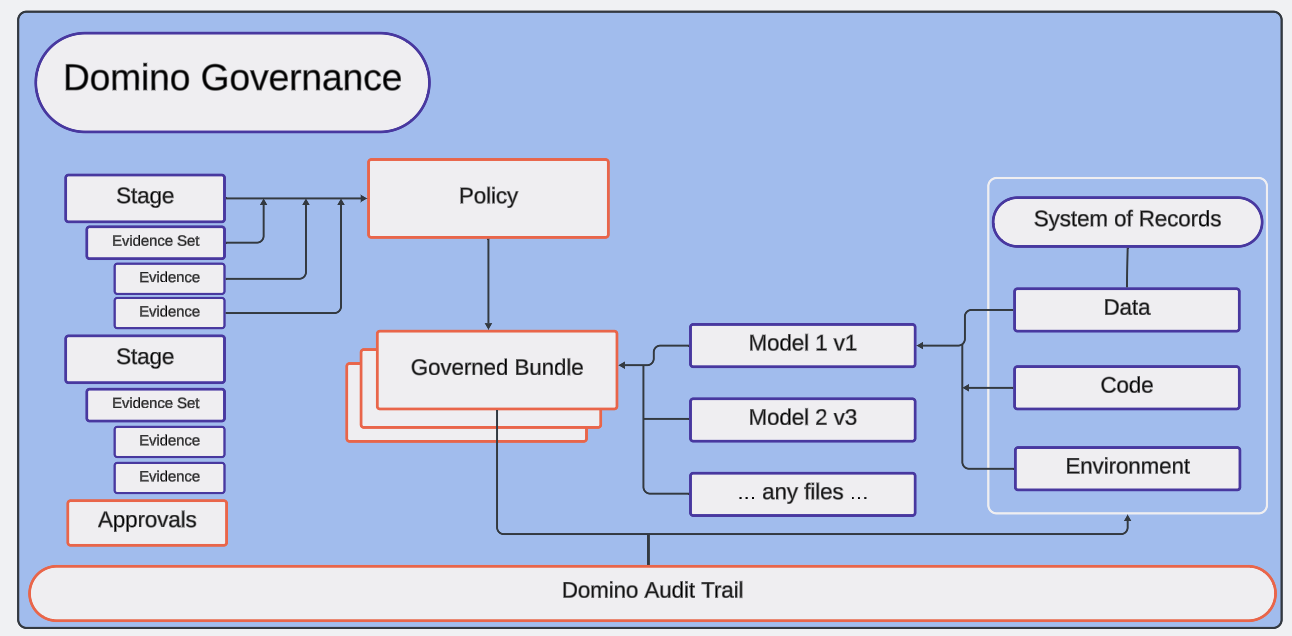Domino Governance refers to the frameworks, policies, and guidelines that oversee the development, deployment, and use of technologies. Domino Governance makes sure that these are aligned with corporate policies and societal values.
This involves a multidisciplinary approach: combining technical, legal, and ethical perspectives to address issues like bias, privacy, accountability, and transparency.
Domino Governance simplifies, organizes, and automates the process of gathering, tracking, and reviewing all assets to help enforce internal or external policies.
It provides a single interface closely connected and integrated within a data scientist’s environment, ensuring smooth governance, version control, and compliance for all stakeholders involved.

| Term | Definition |
|---|---|
Approvals | Actions added to a policy to request approval from an organization or an individual.
Anyone with project access can request approval, but only a |
Attachments | Any files from a project that needs to be governed by a policy in a specific context. |
Classification | The top-level variable for a policy that is meant to carry the overall classification of the governed bundle. It could be used in a tiered approach, such as low, medium, or high risk. |
Classification rules | Classification supports complex operations using the Go programming language. It uses the values results from one or multiple evidence answers and expects an output of a string or a float. |
Evidence | Information that is relevant to a policy. In most cases, evidence is a question with an answer and can include input, metric checks, and scripted checks. |
Evidence sets | Groups of evidence that can be reused within a policy or across policies. Evidence sets are meant to promote consistency of governance. |
Findings | These serve as a necessary step for capturing and addressing issues that will prevent full compliance, ensuring a path to production readiness. |
Governed bundle | A governed bundle can be a model, an application, a report, or any other asset developed within the context of a project. It will store all evidence related to the policy it governs and keep the lineage to the relevant attachments. |
Lifecycle | A set of stages describing each step of building and maintaining a governed bundle. |
Policy | Rules used for a specific classification of project output. |
Stages | Key milestones or phases of a policy. For example, in a model risk management policy, the stages could be: develop business case and define requirements; model development and testing; model validation and deployment; and model monitoring. |
-
Domino Governance workflows - learn more about the people, processes, and systems that make up governance workflows.
-
Create governed bundles - get steps on creating and using our governed bundles.
-
Send governed bundles for review - submit your bundles for review and get them published.
-
Define Domino Governance policies - learn how to create policies from a template.
-
Domino Governance policy components - contains an overview and examples for crafting your own policies.
-
Domino Unified Audit Trail - captures broader compliance events to provide better transparency and accountability.
